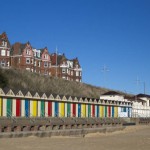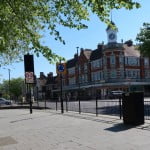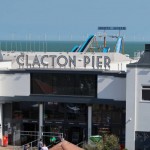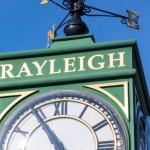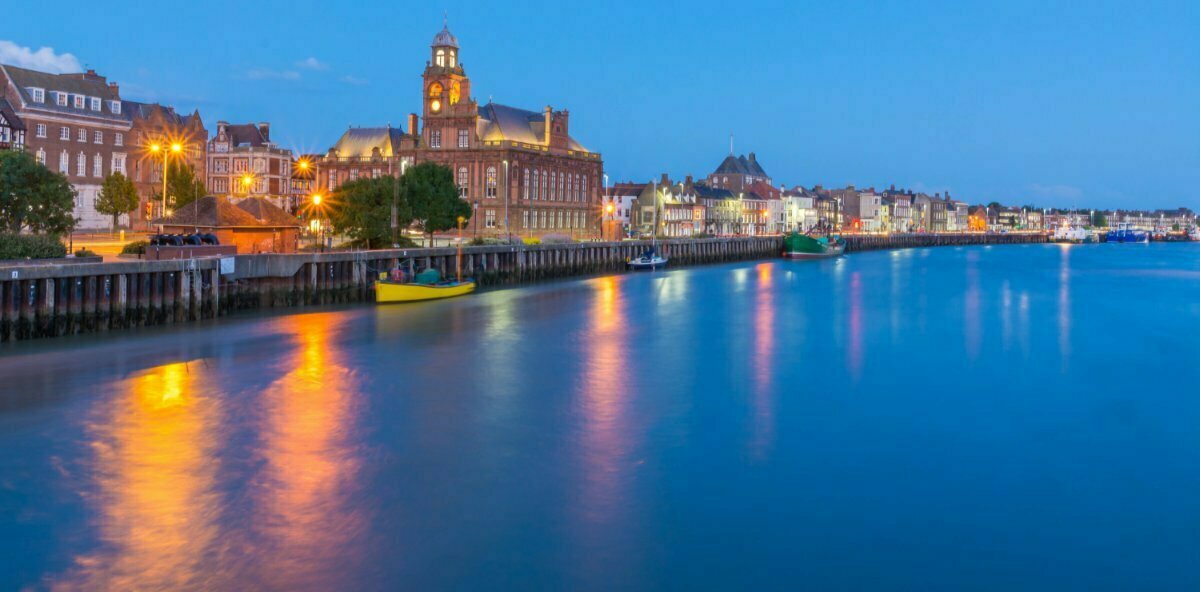
Want to go to Great Yarmouth for your summer holidays? You would be following in the footsteps of your ancestors…
Great Yarmouth, also lovingly called Yarmouth, is a Norfolk town considered the gateway to the Norfolk Broads. Situated on the River Yare, this town was once one of the UK’s biggest herring towns. Back in the industrial era, we were pulling those fishes out of the sea by the millions. Yarmouth has a population of nearly 40,000 people, and its position on the coast makes it an attractive retreat for those on the lookout for a staycation destination.
We researched everything you need to know about this sometimes sunny seaside town, so you can decide if you want to visit it or not. Spoiler alert: you will want to visit it by the time we are through. Let’s start with the history and work our way forward to the best modern-day attractions in town in yet another fantastical town guide from the Five Minutes Spare pit crew.
The Early History of Great Yarmouth
Great Yarmouth has its first official written record in 1081, but there was definitely a town before then. The town, founded by the Angles, was formed not far from a Roman port named Caister. This named Saxon shore fort is still visible from above today. If the Romans had a fort nearby, you could almost guarantee that this area of land was occupied by a villa or two. The town lies on a small stretch of land between the river and the sea, so it has long but narrow streets. The etymology of the town’s name requires little explanation either since it is the town at the mouth of the river Yare.
Doomsday Book
The church mentioned they opened the Church of St Nicholas in the town in 1101. However, towns had to be large enough to have a congregation in order for the church to build a parish in it. The town was already sizable by then, having been quietly growing for several generations already. The town was even mentioned in the Domesday Survey, so we can see exactly how big it was in 1086.
The Yarmouth Domesday entry has 92.5 households in the area. There are three owners listed, but all of them are King William. He owned:
- 12 villagers
- 70 burgesses
- I church
- 5 smallholders
- 4 slaves
- 24 fishermen
- 300 sheep
- 4 plough teams
- 10 acres of meadow
- Woodland for 5 pigs
- 3 salt houses
- An annual value of 32 pounds, 16 shillings, and 2 pence.
This means the town was already extremely wealthy. The presence of three salt houses is incredible and points to absolute wealth. To house 24 fishermen who were also wealthy, since they would pay a tithe on catches.
Medieval Times in Norfolk
Great Yarmouth gained its first charter in 1209, which was issued by Kong John – the same one from Robin Hood. This would allow them to have a weekly market and an annual fair. The fair in Great Yarmouth was a Herring Fair, since the town’s main income was from fishing. The cinque ports in Kent ended up having a personal stake in the herring fair because a large number of Kentish ships sailed this coast. The Kentish towns ran the fair because they had the better charter for it. It was a source of great resentment among the Kentish people. The king granted joint autonomy over the fair in 1277 though, and by 1297, the two groups were fighting together in European waters.
Sometime around the 11/12th centuries, St Nicholas’ church became a priory. The Dominican Friars and the Augustine Friars moved into town in 1270 and 1278 respectively. In 1346, 43 ships sailed from the port at Yarmouth to aid in the Siege of Calais. Two years later, ships passing through here from foreign lands brought the plague to English shores.
Ketts Rebellion and other Stryffs
In the Mid 1500s, Great Yarmouth ran into trouble of its own. It was besieged in 1549 during Kett’s uprising. However, the men of the town managed to repel the rebels. Just in time for the Plague to hit the town. The area suffered for the next few years due to this, however, it was not as bad as the one that hit in 1349 which killed around 70% of the population. There was also a huge number of ships lost off its coast during this time including a dark gay in 1555 when 50were lost in a single 24c hour period.
It wasn’t all bad news, however, as a grammar school opened in 1551. The following year, Elizabeth I granted a further charter for admiralty authority and in 1553 the town got a new drawbridge. Queen Elizabeth I herself came to the town in 1578 and The old Elizabethan house went up in 1596.
Heading into the 17th Century
During this time Herring Fishing really expanded and with it the need to increase the size of the Haven and also fortify the town. Townsfolk built the haven in present use in 1614.
In 1668, Charles II gave a further charter which remained in place until altered by Queen Anne in 1703 when she appointed a mayor. The Zealand exhibition left town in 1702 to go attack the French, as Daniel Defoe described in his journals. There are reports of the harbour silting up several times throughout the Medieval period, each time cleared by local officials.
Let’s stop there for a few moments to discuss some of the fun trivia and facts about Great Yarmouth.
Fun Facts about Great Yarmouth
In this section, we like to spice things up by adding some fun trivia. We dig up the dirt and show it off to all you lovely readers. Here’s what locals have to say about Great Yarmouth when they are drunk at parties:
- Great Yarmouth has been a seaside destination since the 1700s.
- There is a gaol in town that opened in the 1300s and is one of the oldest civic buildings in Britain.
- St Nicholas Church is the largest parish church in all of England. It’s also one of the oldest. Next to the church you will find the birthplace of Anna Sewell, who wrote Black Beauty.
- Great Yarmouth was one of the wealthiest towns in Europe at the height of the herring trade.
- Charles Dickens named Great Yarmouth as one of the finest places in the universe in his novel David Copperfield.
- The dunes in the North Denes area of the beach are home to flora and fauna that make them a Site of Special Scientific Interest.
- Lifeboats have frequented Yarmouth since 1802.
- Jason Statham lived here as a kid!
Now that we’ve had a nice refreshing brainwash, let’s return to the history. Where were we again? Oh yes, the Industrial Revolution and the millions of fish.
The Industrial Revolution in Yarmouth
The Duke’s Head Hotel opened in 1609 with James I visiting in 1614. In 1642, the outbreak of the English Civil War caused the town to be garrisoned for the parliamentarians. In 1644 the townsfolk burned 16 witches here. The Sewell House opened in 1646 with yet another outbreak of plague occurring in 1664. Charles II visited in 1671 and Prince George of Denmark dropped in around 1687. Yarmouth was a busy place. In 1692, William of Orange visited.
In 1702, the Fisherman’s hospital opened. St Georges’s Church opened in 1716. The Custom House opened in 1720. In 1759, the town invested in salt and hot and cold water baths, which ultimately drew in tourism. A theatre followed in 1778. St Nicholas’ Church was rebuilt in 1806 and Louis XVIII visited in 1807. The Princess of Orange stopped by a few years before and the King of Sweden visited in 1810. In 1819, the townspeople erected a statue of Lord Nelson that was 144ft high.
The town was the main supply base for the North Sea Fleet during the French Revolution. At the beginning of the Napoleonic Wars, in 1807, it was similarly used. An interesting telegraph chain ran between the admiralty in Yarmouth and London from 1808 to 1814. The town asserted itself as a useful position for the Royal Navy. The Royal Naval Hospital opened here and they kept storage units and warehouses on the shores. There was a Naval Psychiatric Unit here, which later turned into a barracks.
1838 saw locals build a workhouse. The population in 1851 was 30,879. Wellington Pier opened in 1854, the same year as the iron bridge across the Bure. A Sailor’s Home opened in 1860, built to house any shipwrecked sailors they found. A new fish market opened in 1868 with Yarmouth Beach Railway Station opened in 1877. The town hall went up in 1882 and the football club began in 1897.
The town was the site of great tragedy in 1845 when a clown chasing geese caused a crowd to gather on the Yarmouth Suspension Bridge. The bridge soon collapsed, crushing 79 people. The chains on the south side of the river snapped, sending the bridge tumbling into the river.
Modern Times
By modern times, the herring populations were in serious decline and the industry dried up. Great Yarmouth lost some of its importance. The food processing and electronics industry grew up but never reached the same importance. By the end of the 1800s, the town was a thriving seaside resort, so much of its trade came from tourism. The town got a cinema in 1908 and the Marina opened in 1927.
Germans bombed the town with a zeppelin during WWI, killing two people. The town was also a bombing target for ships, who camped off the port in 1916 and in 1918 to turn guns on the houses. During WWII this got worse. St Nicholas Church was destroyed in 1942. Parts of the old town were destroyed, with most of the rows of houses destroyed over the course of the war. Great Yarmouth is a valuable port.
In 1953 the town’s sea defences were breached by a huge storm Ten people were killed when the sea slammed against the coast on January 31st. This was one of the worst storms in the south of England has ever recorded. In total, 353 people died in England as a result. Yarmouth beach railway station closed in 1959. It took until the following year to refurbish the other train station, which was badly bombed in the Second World War.
Nowadays, the town has a population estimated at closer to 50k than 40k, but the Greater Yarmouth urban district has far more than that. The town received the popular Winter Gardens in 1903 with the population back then being 55k, so it is in recession even now. The town received a shopping centre in 1976 and the bypass opened in 1985.
Modern Great Yarmouth is a bustling hive of seaside activity. Even the slightest hint of sunshine and the beach is packed for miles in either direction. There are lots of seaside based attractions, there’s plenty of nature to admire, and the seals routinely swim to the mouth of the river. It’s a nice place to visit and an even better place to stay for a few weeks. Let’s move on and face up to the famous people you might meet there before we cover some of the best attractions in town.
Famous People from Great Yarmouth
In this section of our trusty tour guide articles, we want to produce information on all of the famous faces you might run into here. Whether in the pub, golf club, or supermarket, here are the famous faces you should watch out for in Yarmouth:
- Medieval Lord Admiral of the Royal Navy John Perbourne, who defeated the French at the Battle of Sluys.
- Daniel Defoe didn’t live here, but he loved it and visited often. He wrote about it in the book Robinson Crusoe, where the book begins with a storm in the port.
- Famous 19th-century sculptor John Bell was born here, hence Bell’s Row.
- Peter Cadbury, entrepreneur, and chocolatier was born here.
- Anna Sewell, of Black Beauty
- Joe Tracini, the actor from Hollyoaks, is a Great Yarmouth guy.
- As is an English actor and comedian Karl Theobald.
Now that we have covered the history, the famous people, and the fun facts, we can move on to the attractions unimpeded.
The Best Things to See and Do in Great Yarmouth?
What are the best attractions in and around town? You’ve come to the right place to get a good answer.
Historic Sites and Landmarks
Definitely a landmark but also an attraction since the Industrial Era, Great Yarmouth Pleasure Beach is only rivalled by the similar attraction found in Blackpool, far to the north. The pleasure beach here has numerous attractions, from white-water rides to children’s entertainment and amusement arcades. New rides added this year include Floaty Boaty and the Pendulum, both aimed at younger users. The pleasure beach sometimes hosts special events and you can do group bookings here. Great for birthday parties. They have their own gardens you can stroll through, not far from the beach. You can even find the odd fairground fright night here. Go mad and enjoy it.
Part historic landmark and part museum, the Elizabethan House Museum is an interactive exhibit space where kids can play dress up and you can live as Elizabethan nobility for a few hours. The inside is beautifully decorated in 15th-century furnishings, lovingly restored by Historic England. Please give generously.
Galleries and Museums
One of the local’s favoured attractions in Great Yarmouth is the Time and Tide Museum. Billed as the most exciting museum in Norfolk, this place is lit up like a theatre rather than a museum. It’s filled with interesting events around the coast of Norfolk, as well as paintings of different eras in its in-built gallery. Find artefacts here, browse interesting collections based largely around seafaring, and generally learn about the maritime heritage of the herring industry, the town, and the coast of England.
Although not strictly a gallery or museum, you can visit the aquarium at Sea Life Centre in Great Yarmouth and it’s one of the best attractions in town. They have a massive aquarium which teaches you so much about the animals and plant matter that hides just off our coasts. You can go on an underwater adventure to learn more about tropical sea life, too. It’s all there for you to enjoy. This location regularly run school outings and you can have parties here if you are willing to fork out. If your kid loves fish, it’s worth it.
Outdoor Attractions
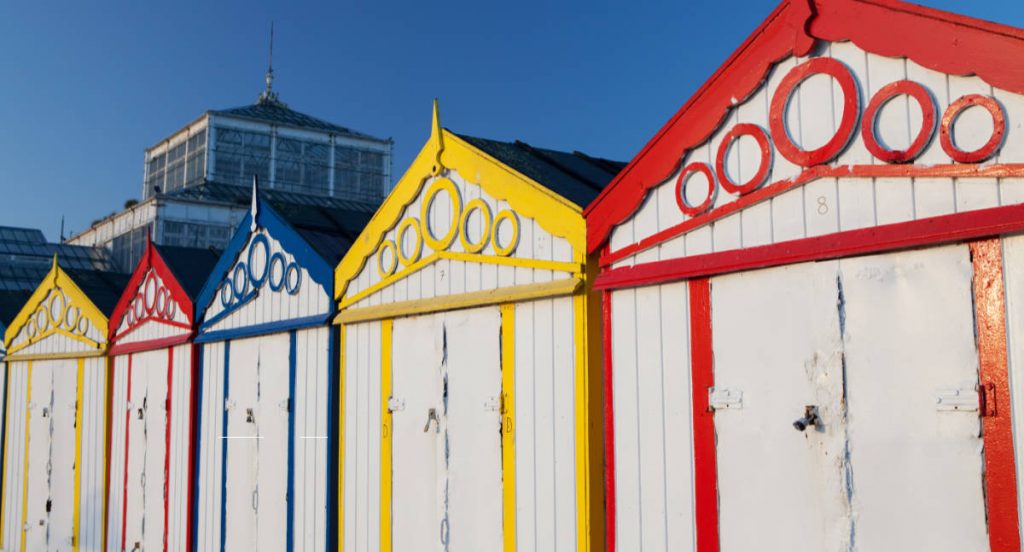
Image: Ian Dyball/Shutterstock.com
We have a special mention here for outdoor attractions specifically tailored to children. If you have kids you want to entertain for a day, take them to Joyland. This Great Yarmouth attraction is tailored to kids below the age of 10. It’s got some soft play, some nice slow rides, and just enough adventure to tire them out for bedtime. It comes highly recommended by other parents.
You can’t go to Great Yarmouth and miss the beach ao the beach huts for that matter! That’s the standard beach, not the pleasure one, though there’s not much standard about it. As mentioned earlier, the beach has an SSSI space at the northern end, which is outstanding. It’s a long beach at low tide, with plenty of room for everyone. Get there early on sunny summer days and enjoy the view. Remember, this is only the central beach. You have Gorleston to the south and many others around to choose from.
Sports and Recreation
If you like golf then you’re in luck. Choose from the Great Yarmouth & Caister Golf Club in the north. Go to the Pirates Cove Adventure Golf playpark in town or visit the Gorleston Golf Club in the south. There’s even the Caldecott Hall Golf & Leisure club in the southwest.
If football is your game, then look no further than Great Yarmouth Town FC. The club formed way back in 1897 and currently plays at the Wellesley Recreation Ground. Visit their website to take a tour or see a game.
Last but by no means least, Great Yarmouth has its own racecourse. It’s rare that we come across a town of this size that has its own racecourse, so it’s a little exciting for us. Head to Great Yarmouth Racecourse on a weekend in your finest outfit and don’t forget your hat. Have a few flutters of bets and enjoy the sunshine. It’s a great day out for all.
Shopping and Retail
There are many gift shops along the seafront that you can use for gift buying. Asides from this, go out of the waterfront area and visit the Gapton Hall Retail Park in the west of town. You can find the Pasteur retail park in the town centre, and the Victoria arcade near the high street.
Other Notable Local Attractions to Yarmouth
We try to cover everything in as much detail as possible but as ever, we are running out of space. Here are the loose end attractions you may want to check out if you are in town for longer than a few days:
- Visit Caister-on-Sea and go to the beach or browse the promenade
- Hemsby Beach offers a quieter alternative.
- Visit the Britannia Pier and play with the amusements.
- See the Lydia Eve Steam Drifter, a floating museum that lets you experience how a steam cruiser worked.
- Visit the Merryvale Model Village to see things in tiny detail.
- Spend time on the Great Yarmouth Marine Parade.
- Go to Caister and visit the motor museum there.
- Or visit the Pavilion Theatre in nearby Gorleston.
Now you’re almost as clued up on this lovely port town as we are.
How to get to Great Yarmouth?
We can’t leave you hanging without telling you how to get there. If you want to visit Great Yarmouth this summer, then here are some rough directions that may or may not get you there.
By Road
Head north on the M1 and then west on the A47.
By Rail
Great Yarmouth train station is on the Greater Anglia line.
By Air
Your nearest airport is Norwich.
By Sea
Look for Great Yarmouth deep-water outer harbour.
Got Five Minutes?
Are you still here? If so, then you may wish to check out our plethora of travel guides at Five Minutes Spare HQ. You may even find your own town in there. It’s worth a look. Don’t forget to follow us on Facebook, either.
Header Image: Travel__Photography/Shutterstock.com
